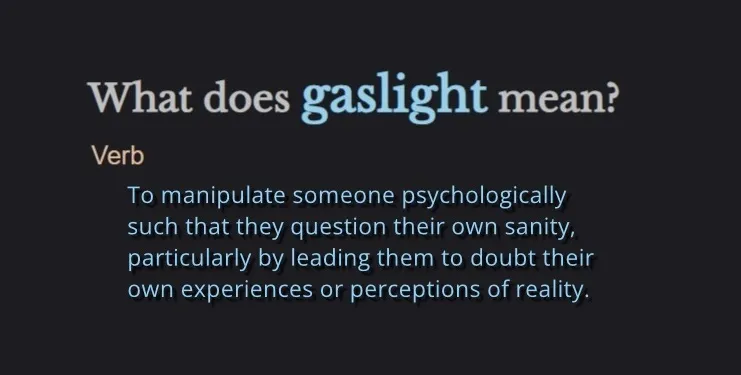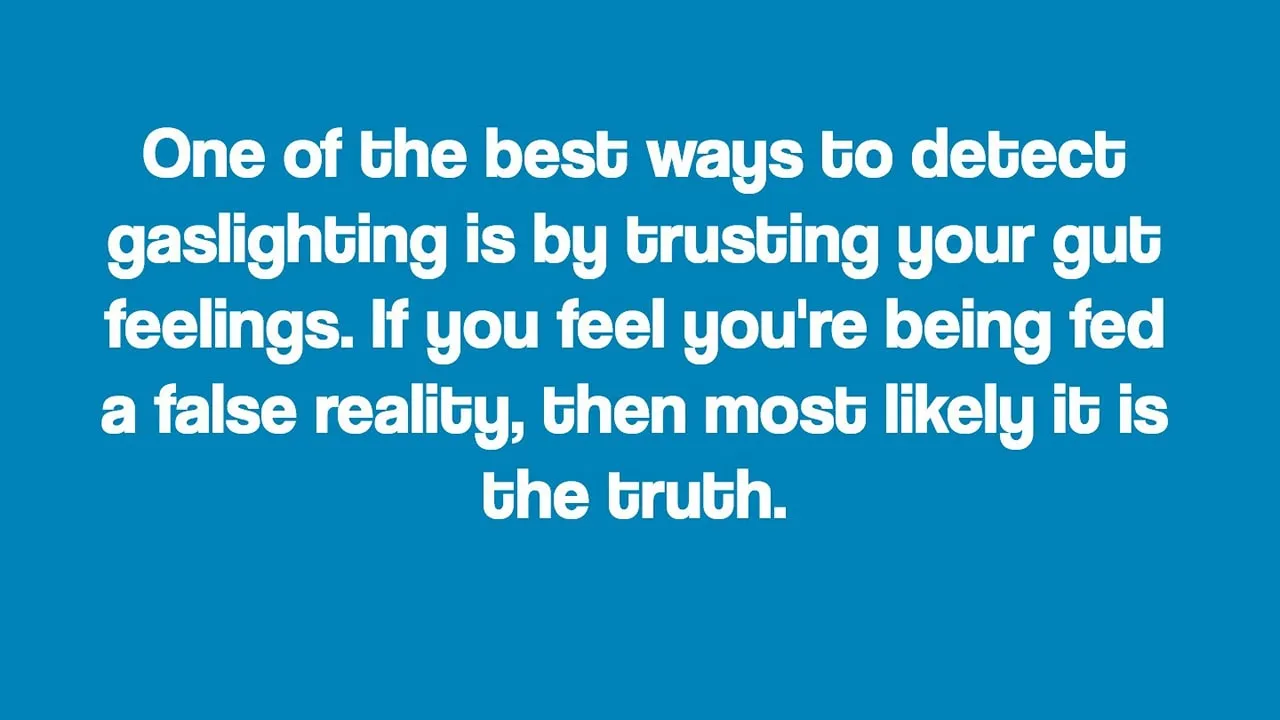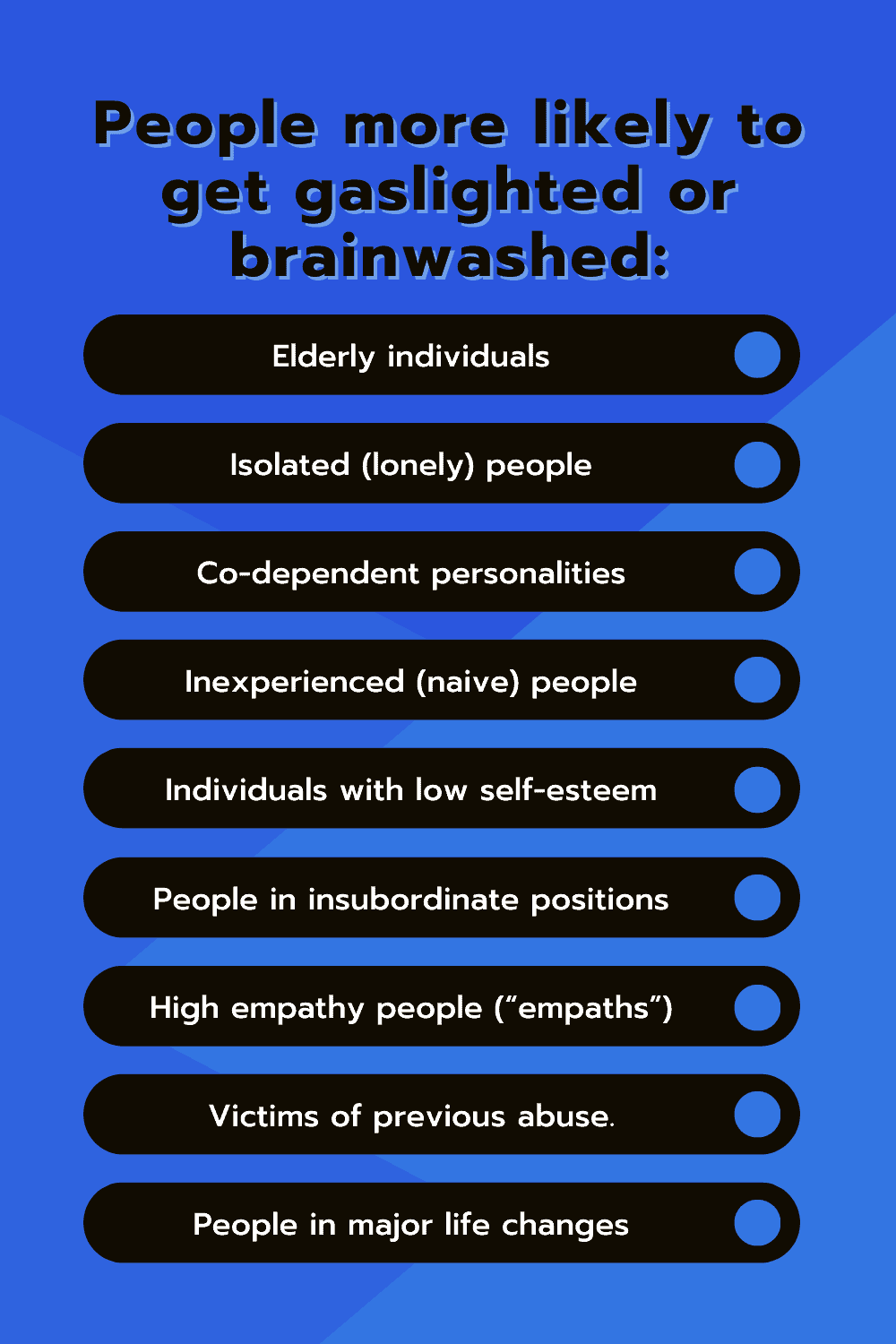Today's Tuesday • 10 mins read
— By Dr. Sandip Roy.
Gaslighting and brainwashing are both manipulative tactics that can wreck your mental health, especially if you are a vulnerable person. However, they’re not the same thing.
Let’s explore what sets these tactics apart and how to protect yourself.
What is Gaslighting?
Gaslighting is a type of psychological abuse common in abusive personal relationships. It is also seen in leader-follower situations.
Psychological Impact:
- The gaslighter tries to make you go “crazy” by creating a “surreal” interpersonal environment (Sweet, 2019).
- Gaslighting victims may suffer prolonged stress (even childhood stress), chronic anxiety, depression, and a profound sense of confusion.
- Over time, this constant background of self-doubt can lead to poor self-esteem and indecisiveness.

What is Brainwashing?
Brainwashing is a well-planned psychological manipulation commonly used by cults, extremist groups, and authoritarian or dictatorial regimes.
Origins and Usage:
- The term “brainwashing” originated during the Korean War (1950 to 1953) for the methods used by the Chinese army on the US prisoners of war.
- Today, it’s typically used in the context of religious cults, political indoctrination by powerful leaders, and even in some extreme marketing tactics.
Key Differences Between Gaslighting and Brainwashing
Gaslighting and brainwashing differ in their intent, methods, and outcomes, though both can muddle your thinking, emotions, and even actions.
Here’s how to identify the separate natures of these beasts:
Intent
- Gaslighting: The main intent is to sow doubt and confusion in the victim, making them question their own reality. It is usually subtle. It is likely a deliberate and manipulative tactic of relationship control, especially in relationships where one partner is more powerful.
- Brainwashing: The intent here is far-reaching—altering a person’s core beliefs and attitudes. It is often done by groups with a specific goal, like religious cults or political groups.
Methods
- Gaslighting: Common methods include denial, contradiction, and trivializing the victim’s experiences. It’s often a long-term strategy that wears down the victim over time.
- Brainwashing: This involves a more structured approach, including isolation, depersonalization, and indoctrination. It’s a more intense form of manipulation that can happen relatively quickly under extreme conditions.
Outcomes
- Gaslighting: The victim often has anxiety, depression, low self-esteem, and poor decision-making. Vulnerable narcissists are more likely to find gaslighting tactics acceptable (March & Kay, 2023).
- Brainwashing: The outcomes are more drastic, leading to a complete alteration of the victim’s belief system, potentially making them a proponent of the manipulator’s agenda.
Common Tactics Used in Gaslighting vs. Brainwashing
Know these tactics so you can better block them and safeguard your sanity and peace.
Gaslighting Tactics
Each of these gaslighting tactics can erode your sense of reality, making it easier for the gaslighter to control you:
- Denial: The gaslighter will flat-out deny saying or doing something, even if you have proof.
- Contradiction: They’ll challenge your memory of events, insisting things happened differently than you remember.
- Trivializing: The gaslighter minimizes your feelings or needs, making you feel like you’re overreacting or being too sensitive.
- Misdirection: The gaslighter will divert the conversation or issue to something else, avoiding accountability and confusing the victim.
- Lying: The gaslighter will fabricate stories or facts to support their narrative, making it difficult for the victim to discern reality.
- Destabilization: The ultimate goal is to destabilize the victim emotionally and psychologically, making them more susceptible to further manipulation and control.
- Isolation: Often, the gaslighter will attempt to cut off the victim from friends and family, making them more dependent on the gaslighter for their sense of reality.
Political gaslighting is often a five-step process to control people (Carpenter, 2018):
- Stake a claim: A bold statement or claim is made to capture attention and set the stage for the gaslighting process.
- Advance and deny: Advancing the narrative while also denying elements of it. This creates confusion and makes it difficult for people to pin down the truth, thereby sowing doubt and uncertainty.
- Create suspense: Building anticipation or suspense around the issue, so that people become more emotionally invested and, therefore, more susceptible to manipulation.
- Discredit the opponent: Discrediting opponents or critics, weakening their arguments and evidence against the gaslighter, making it easier to maintain control over the narrative.
- Win: The final step is the perceived victory, where the gaslighter’s narrative becomes the accepted truth, at least among their supporters. This reinforces the gaslighter’s authority and control, completing the cycle.

“Political gaslighting, by leading citizens to hold beliefs disconnected from the available evidence, poses a distinctive threat to democratic politics.”
— Beerbohm & Davis, Gaslighting Citizens, 2021
Brainwashing Tactics
Brainwashing doesn’t happen overnight; it’s a gradual process, usually involving the following steps:
- Isolation: The victim is cut off from the outside world, limiting their access to contrasting viewpoints.
- Depersonalization: The victim’s identity is stripped away, often through humiliation or subjugation, making them more malleable.
- Indoctrination: The victim is bombarded with the manipulator’s beliefs, often through repetitive messages or rituals.
- Enforcement: Any deviation from the new belief system is punished, reinforcing the indoctrination.
- Confirmation: The victim starts to adopt the new beliefs as their own, completing the brainwashing process.

Why Do We Confuse Gaslighting With Brainwashing
The terms “gaslighting” and “brainwashing” are often used interchangeably, leading to confusion and misunderstanding. While both are distinct forms of psychological abuse, their shared tactics and effects on the victim’s mind contribute to the confusion between the two. :
- Manipulation and Control: Both gaslighting and brainwashing aim to manipulate and control the victim’s thoughts and emotions. This common goal can make it challenging to distinguish between the two.
- Doubt and Reality: Both tactics can cause victims to doubt their own perception of reality and memory, further blurring the lines between them.
- Psychological Effects: Gaslighting and brainwashing can lead to similar psychological outcomes like confusion, anxiety, and depression, making it even harder to identify the specific form of manipulation at play.
- Subtlety and Gradual Tactics: Both methods can be difficult to detect as they often involve subtle and gradual manipulation tactics. This subtlety can make victims question whether they’re being manipulated at all.
Both forms of manipulation share some striking similarities that contribute to this mix-up. Knowing these small details can help you figure out what you or someone else is going through and do what you need to do to stay safe.

How To Protect Yourself From Gaslighting And Brainwashing
Protecting yourself from gaslighting and brainwashing starts with being skeptical about trusting anyone and everyone.
Unless you doubt that someone might be playing with your mind, you would not explore it further.
And to explore that angle deeply, these are some tips to help you recognize and guard against these:
- Educate Yourself: The first step in protection is awareness and education—learning more about what psychological manipulation is. You’re already doing that by reading articles like this one (see also the Further Reading section).
- Trust Your Instincts: If something feels off, it probably is. Don’t ignore your gut feelings; they are your first line of defense.
- Seek Outside Perspectives: Manipulators often isolate their victims. Maintain a strong support network and don’t hesitate to seek advice.
- Set Boundaries: Make it clear what behavior you will and won’t tolerate. Boundaries are essential for maintaining your mental well-being.
- Document Evidence: Keep records of interactions that make you uncomfortable. This can be useful for both personal reflection and potential legal actions.
- Consult Professionals: If you suspect you’re a victim of gaslighting or brainwashing, consult a mental health professional for diagnosis and treatment options.
- Exit Strategy: In extreme cases, you may need to remove yourself from the manipulative environment entirely. Have an exit strategy in place for such situations.
Knowledge is power, and the more you know, the less vulnerable you become.
Keep your guard up against the invisible ploys of gaslighters and brainwashers. Noticing their trap in real-time can help you avoid falling into it.
Remember, your mental well-being and self-belief should be your priority, not what others tell you.
Likely Victims of Psychological Manipulation
Victims of gaslighting and brainwashing are mostly psychologically vulnerable people:
- Elderly individuals
- Isolated (lonely) people
- Co-dependent personalities
- Inexperienced (naive) people
- Individuals with low self-esteem
- People in insubordinate positions
- Highly empathic people (“empaths”)
- Those with mental health issues (depression, anxiety)
- Victims of previous abuse (physical, sexual, or emotional)
- People going through major life changes (divorce, job loss)

Real-World Examples
Understanding gaslighting and brainwashing in theory is one thing; seeing them in action is another. Here are some real-world examples that illustrate how these manipulative tactics manifest in various settings.
Gaslighting Examples
- In Relationships: A partner consistently denies saying hurtful things and accuses you of being too sensitive or imagining things.
- In the Workplace: A coworker takes credit for your ideas and then denies ever hearing them from you.
- Historical Events: In some political regimes, leaders have rewritten history to suit their narrative, making citizens question their understanding of past events.
Brainwashing Examples
- Religious Cults: Members are isolated from their families and subjected to repetitive teachings that alter their belief systems.
- Political Indoctrination: In some authoritarian regimes, citizens are exposed to state-controlled media that shapes their views and attitudes.
- Marketing Schemes: Some multi-level marketing companies use brainwashing techniques to make recruits believe in the product to an extreme degree.
Chinese Brainwashing
One method used by Chinese captors to brainwash American POWs was “thought reform” or “ideological remolding.”
It combined indoctrination, guilt manipulation, and emotional coercion.
- Prisoners were put through long hours of education on the principles of communism, draining them emotionally and psychologically.
- Then, they were made to feel guilty because of their “imperialist” backgrounds, breaking down their sense of self, and making them vulnerable to an altered sense of identity.
- Finally, they replaced their entire belief system with new beliefs and values.
Final Words
Gaslighting and brainwashing are both powerful ways to manipulate someone psychologically. However, both differ in their intent, methods, and outcomes.
For one, gaslighting aims to create doubt and confusion, while brainwashing seeks to radically alter the victim’s core beliefs and attitudes. Two, brainwashing is more intense and harsh than gaslighting.
Moreover, it may be more difficult to escape a brainwasher’s trap than that of a gaslighter.
Further Reading:
- Robin Stern, in the 2nd edition of her bestseller book The Gaslight Effect: How to Spot and Survive the Hidden Manipulation Others Use to Control Your Life, refers to gaslighting as “an idea whose time has come” (Stern, 2018).
- Kathleen Taylor’s definitive book Brainwashing: The Science of Thought Control shows how thought-control persists all around us, from marketing and television to politics and education.
- Victim Gaslighting Questionnaire (VGQ) is a valid and reliable tool to measure the severity of gaslighting in victims of interpersonal relationship abuse (Bhatti, Shuja & Aqeel, 2021).
√ Please share it with someone if you found this helpful.
√ Also Read:
- 20 Phrases To Shut Down A Gaslighter
- 10 Subtle Signs That You’re Being Gaslighted
- How To Spot A Narcissist’s Gaslighting & What To Do
- The Unbearable Mental Weight of Unconscious Gaslighting
• Our Story!